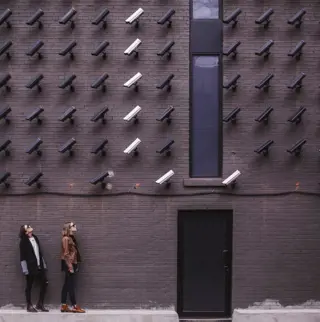We live in an incredibly diverse world. But with diversity comes risk, especially in the design space.
Whether intentional or not, every design decision can potentially exclude people. Exclusion is never something designers intentionally aim for, but it occurs when diversity and uniqueness are not recognised, or when designers feel that making designs accessible to all is too much work.
Key Takeaways
- Inclusive design is the practice of considering the full range of human diversity when designing a product that meet the needs of as many individuals as possible.
- Inclusive design is important as it can help to avoid legal issues, appeal to a broader market, and is the right thing to do.
Five million Australians are vulnerable to exclusion, despite possessing over $40 billion in annual disposable income. In this article, we will delve into the world of inclusive design, examining why it is important, its principles, and what it means for the future.
What is inclusive design?
Inclusive design is human-centred and considers the full range of human diversity, such as ability, language, gender, age, and other forms of human difference, as part of the design process. In other words, it means creating usable, functional, and easy-to-use products that meet the needs of as many individuals as possible. Inclusive design caters to both permanent and temporary impairments and attempts to overcome other forms of human difference that include language, culture, gender, and age.
Inclusive design is often mistaken for accessibility, which focuses solely on the outcome, whereas inclusive design is a human-centered approach that aims to design products for as diverse a range of people as possible.
Why is inclusive design important?
Did you know that over a billion people have a temporary or permanent impairment of some sort?
An inclusive approach to design can help you seize important opportunities to fuel the next phase of growth for your business through new products and services that are accessible to all segments of the market. But more than just being good for business, there are a couple of other important reasons why an inclusive approach to design should always be considered:
Avoid lawsuits
Many countries have laws protecting people with disabilities from being discriminated against to ensure that they have the same rights and opportunities as everyone else. Recently a US man sued Domino’s after he was unable to order on the website and mobile app.
It’s the right thing to do
A world that enables everyone is a better world. It’s also a great way to build empathy with users, something all designers work hard to achieve.
Understanding diversity
In order to design for a diverse audience, you must first understand diversity.
If products and services are designed with the ‘majority’ in mind, there are many people who would miss out on full utility, usability, choice and desirability. So, who is missing out? The short answer is - most people.
If we use our abilities and biases as a starting point, we end up with products designed for people of a specific gender, age, language, ability tech literacy and physical ability. Those with specific access to money, time and social network
What we find hard to visualise is that anyone of us can experience difficulty at some point in our life, even if temporary or situational. Microsoft illustrates this concept using three personas to describe types of disability and difficulty:
-
Permanent: someone with an ability-limiting condition that is lasting and is unlikely to change (e.g. amputee, blind or deaf person)
-
Temporary: someone with an ability-limiting condition that will resolve with time (e.g. broken arm, tonsillitis, or even severe sunburn)
- Situational: someone with an ability-limiting condition that is dependent on specific situations (e.g. at a music concert where it’s very loud and hard to hear anything, or a new parent with an infant).
With this perspective, it is evident that any one of the close to 26 million Australians can be susceptible to either the temporary or situational category, even if we don’t live with a permanent disability. When you consider it that way, the importance of inclusive design becomes a lot clearer.
The principles of inclusive design
To adopt an inclusive mindset you must first recognise exclusion. Only after understanding exactly how and why people are excluded can you start to work towards inclusive solutions. Once you’ve embraced an inclusive design mindset, there are a number of key principles focussed on putting people first.
By following these principles, you’ll start designing for the needs of people with permanent, temporary, situational, or changing disabilities — designing for everyone really.
-
Provide comparable experience
Ensure your interface provides a comparable experience for all so people can accomplish tasks in a way that suits their needs without undermining the quality of the content. -
Consider the situation
People use your interface in different situations. Make sure your interface delivers a valuable experience to people regardless of their circumstances. -
Be consistent
Use familiar conventions and apply them consistently. -
Give control
Ensure people are in control. People should be able to access and interact with content in their preferred way. -
Offer choice
Consider providing different ways for people to complete tasks, especially those that are complex or non standard. -
Prioritise content
Help users focus on core tasks, features, and information by prioritising them within the content and layout. -
Add value
Consider the value of features and how they improve the experience for different users.
These principles were put together by a gang of accessibility gurus and to get full grasp be sure to check out the full details.
The business benefits of inclusive design
Good design can happen by accident, but more often than not, it comes off the back of a proven process. A rigorous inclusive design process mitigates business risk and ensures repeatable design success. Understanding the diverse range of user needs can reduce the risk of undesirable and costly problems later in the project development lifecycle, such as:
-
Excessive customer support costs
-
A large proportion of no-fault found warranty returns
-
Legal issues
-
Costly rectification work required close to, or after launch
-
Customer dissatisfaction and brand degradation
The importance of adopting good, inclusive design principles early in the conceptual design stage is demonstrated by a report from the Design Council (Mynott et a), which found that changes after release cost 10,000 times more than changes made during conceptual design.
Inclusivity is the future of design
Inclusivity isn’t just a moral or ethical decision - it makes good business sense. A good place to start is an accessibility audit, giving you a comprehensive report that lists the website's accessibility issues, the impact on users and technical recommendations on how to resolve them.
If you’d like more information on accessibility audits, or you’re interested in one of our inclusive design workshops, contact us today.




